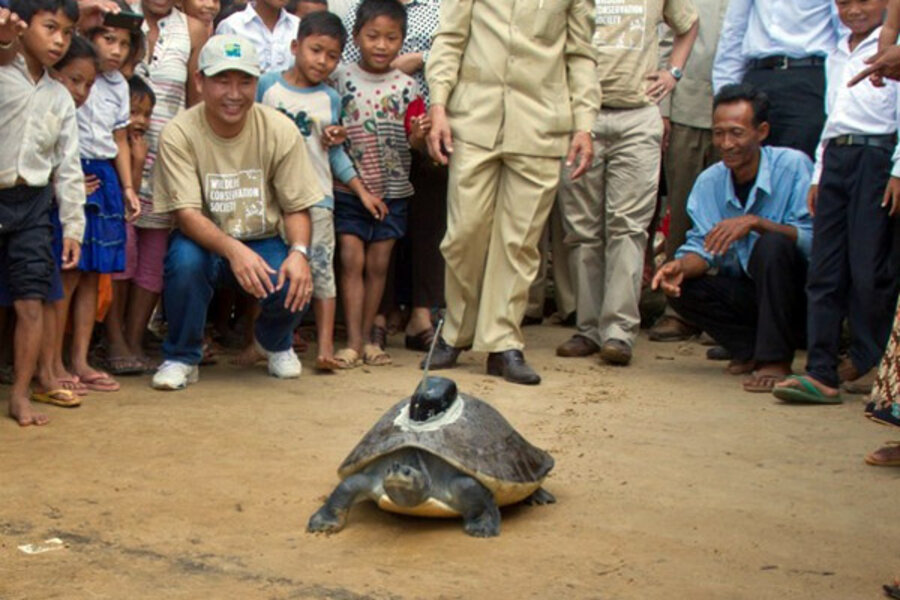Rare turtle back in the wild with fancy new satellite tracking device
Loading...
In a great step for turtle-kind, one of the rarest turtles on Earth has been released back into the wild, sporting a new accessory: a satellite tracking device.
Only about 200 Southern River terrapins still exist in the wild, and on Monday (Jan. 16) one of them plodded into the Sre Ambel River in Cambodia wearing a satellite tag as a crowd of officials and well-wishers cheered it on.
It's the first time researchers have attempted to monitor this species with a satellite tag, which was cemented to the back of the 75-pound (34-kilogram) female. Conservationists say watching how it navigates through commercial fishing grounds and other habitat threatened by mining and the shrimping industry may help reveal how to best save the endangered turtle.
It's estimated that fewer than 10 reproducing female terrapins now live in the Sre Ambel River, so even a single turtle could help maintain genetic diversity for a species that has already suffered drastic population declines and was once thought extinct.
"By reducing the adult mortality of the Southern River terrapin, even by fractions – as little as 10 animals a year per population, in this circumstance – we can have immediate and long-term positive impacts on the remaining wild populations of this critically endangered species," said Brian D. Horne of the Wildlife Conservation Society, which helped arrange the terrapin's release.
After decades of violence and upheaval in Cambodia wrought by the Khmer Rouge and the Pol Pot regime, the country was left in severe poverty, and thousands of turtles were captured and sold off to China, where the animals are a popular item at the dinner table.
For many years the Southern River terrapin was thought extinct, but in 2000 a small population of the species was found in the Sre Ambel River.
In recent years, many new animal species have been discovered in the region.
The turtle released Monday was captured in April 2011 and voluntarily turned over to WCS Cambodia officials.
Follow OurAmazingPlanet for the latest in Earth science and exploration news on Twitter @OAPlanet and onFacebook.







